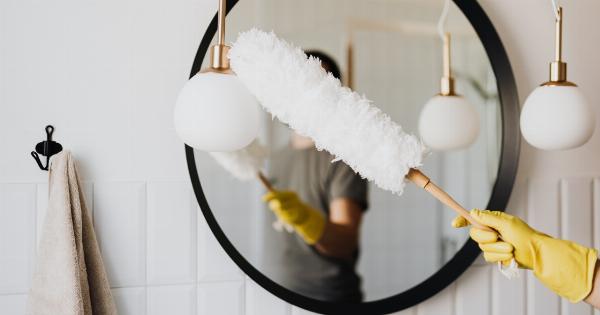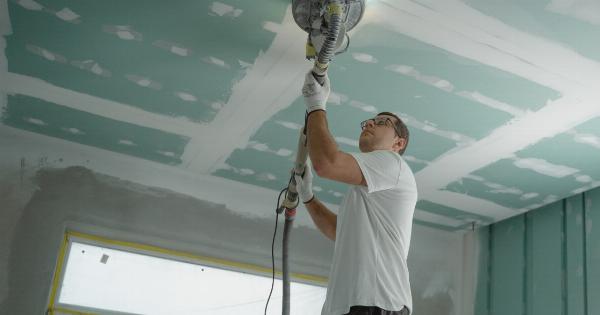Our homes are meant to be a safe haven, a place where we can relax and unwind after a long day.
However, did you know that there could be toxins lurking in your home that can be harmful to your health? Many everyday products and materials that we use in our homes contain toxic substances that can have long-term effects on our well-being. In this article, we will explore some common toxins found in homes and ways to minimize our exposure to them.
Volatile Organic Compounds (VOCs)
Volatile Organic Compounds, or VOCs, are chemicals that are released into the air as gases from certain solids or liquids.
They can be found in a variety of products commonly used in homes, such as paints, cleaning supplies, aerosol sprays, and air fresheners. Prolonged exposure to VOCs can lead to a range of health issues, including respiratory problems, headaches, dizziness, and even cancer.
Formaldehyde
Formaldehyde is a colorless gas with a strong, pungent smell. It is commonly used in a variety of household products, including pressed wood products such as furniture and cabinets, carpets, and adhesives.
High levels of formaldehyde can cause irritation of the eyes, nose, and throat, as well as respiratory issues and an increased risk of asthma and allergies.
Lead
Lead is a toxic metal that can be found in old paint, dust, and soil. It was frequently used in paint until it was banned in the late 1970s.
Exposure to lead can be particularly harmful to children, as it can lead to developmental delays, lower IQ, and behavioral problems. Adults may experience high blood pressure, kidney damage, and fertility issues as a result of lead exposure.
Asbestos
Asbestos is a mineral fiber that was once widely used in building materials for its strength and heat resistance. However, it was discovered to have serious health risks, including lung cancer, mesothelioma, and asbestosis.
While the use of asbestos has significantly decreased, it can still be found in many older homes. Disturbing asbestos-containing materials can release fibers into the air, posing a health hazard.
Bisphenol A (BPA)
Bisphenol A, commonly known as BPA, is a chemical used in the production of certain plastics. It can leach out of plastic containers and bottles into food and beverages, especially when heated.
BPA is believed to disrupt the body’s hormonal balance and has been linked to various health problems, including reproductive issues, obesity, and cardiovascular diseases.
Phthalates
Phthalates are a group of chemicals used to make plastics more flexible and durable. They can be found in a wide range of products, including vinyl flooring, shower curtains, toys, and personal care products.
Exposure to phthalates has been associated with hormonal disruptions, reproductive issues, and developmental abnormalities, particularly in children.
Radon
Radon is a radioactive gas that is released from the ground and can seep into homes through cracks and gaps. It is odorless and invisible, making it difficult to detect without proper testing.
Prolonged exposure to radon gas significantly increases the risk of developing lung cancer, especially for smokers.
Pesticides
Many households use pesticides to eliminate pests, such as insects and rodents. However, these chemical-based products can also pose health risks to humans and pets.
Prolonged exposure to pesticides has been linked to various health issues, including respiratory problems, neurological effects, and even cancer. It is important to use alternative pest control methods or choose natural, non-toxic alternatives whenever possible.
Mold and Mildew
Mold and mildew can thrive in damp and poorly ventilated areas of the home, such as bathrooms, basements, and kitchens.
Exposure to mold spores can trigger allergic reactions, respiratory problems, and even infections in individuals with weakened immune systems. Regular cleaning, proper ventilation, and addressing any moisture issues are crucial in preventing mold growth.
Flame Retardants
Flame retardants are chemicals added to various products to reduce their flammability. They can be found in furniture, mattresses, carpet padding, and electronics.
Some flame retardants, such as polybrominated diphenyl ethers (PBDEs), have been linked to health problems, including thyroid disruption, developmental issues, and impaired fertility.
Reducing Exposure to Household Toxins
While it may seem overwhelming to think about the toxins lurking in our homes, there are steps we can take to reduce our exposure and create a healthier living environment.
Choose Low VOC Products
When purchasing paints, cleaning supplies, and other household products, opt for low or no VOC options. Look for products labeled as environmentally friendly or certified by recognized organizations that focus on indoor air quality.
Air Out New Purchases
Newly purchased products, such as furniture and carpets, may emit VOCs and other harmful chemicals. Before bringing them indoors, air them out in a well-ventilated area, such as a garage or patio, to allow any chemical off-gassing to dissipate.
Keep the Home Clean
Regular cleaning helps reduce the accumulation of dust and allergens in the home. Use natural, non-toxic cleaning products or make your own using ingredients like vinegar, baking soda, and essential oils.
Vacuum and dust regularly to eliminate any potential sources of toxins.
Improve Ventilation
Proper ventilation is key to maintaining good indoor air quality. Open windows whenever possible to allow fresh air to circulate. Use exhaust fans in bathrooms and kitchens to remove excess moisture and prevent the growth of mold and mildew.
Test for Radon
Consider testing your home for radon gas. Radon test kits are readily available and can provide you with valuable information about your indoor air quality. If elevated levels of radon are detected, take appropriate measures to mitigate the issue.
Use Natural Pest Control Methods
Avoid using chemical-based pesticides whenever possible. Instead, opt for natural pest control methods such as traps, baits, and natural repellents. Keep your home clean and minimize potential pest entry points by sealing gaps and cracks.
Avoid Plastic Containers
Reduce your exposure to BPA and phthalates by avoiding plastic containers whenever possible. Opt for glass or stainless steel containers for food and beverages. Use BPA-free baby bottles and choose toys made from natural and non-toxic materials.
Inspect for Asbestos
If you live in an older home, consider having it inspected for the presence of asbestos. Hire professionals to remove or safely encapsulate any asbestos-containing materials to avoid releasing harmful fibers into the air.
Conclusion
Our homes should be a sanctuary, free from the harmful effects of toxins.
By being aware of the potential toxins lurking in our homes and taking proactive steps to minimize our exposure, we can create a healthier living environment for ourselves and our loved ones. Remember, small changes can make a significant impact on our overall well-being.






























